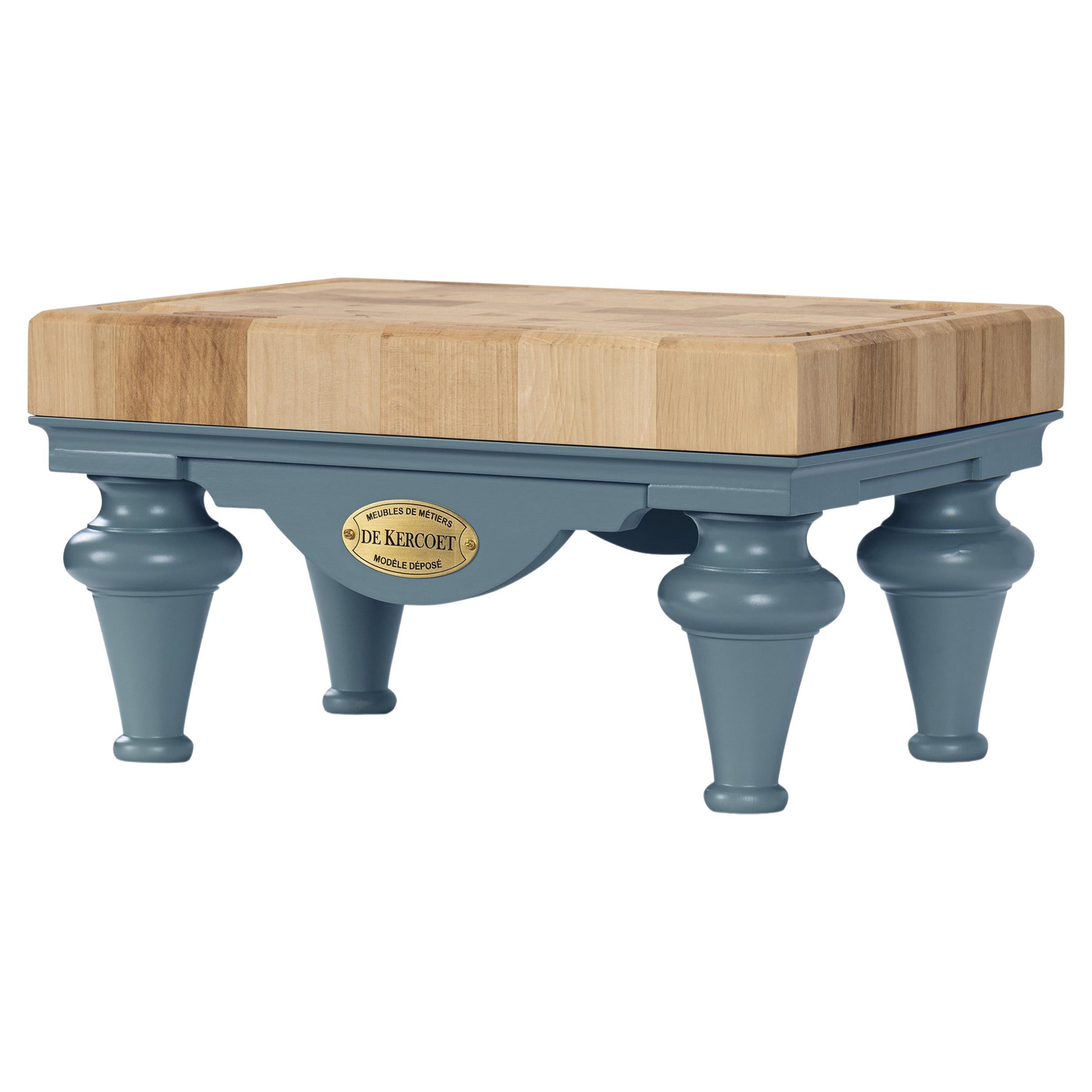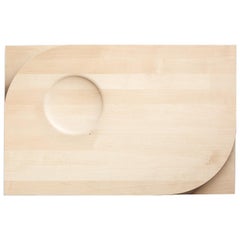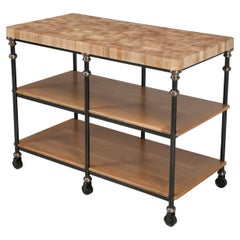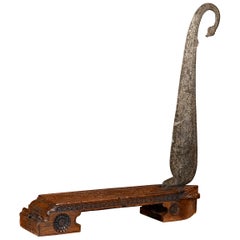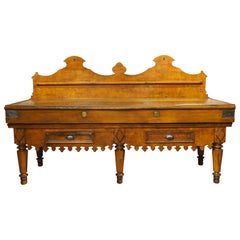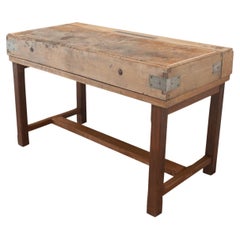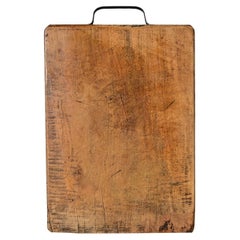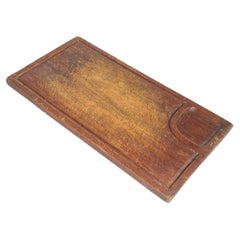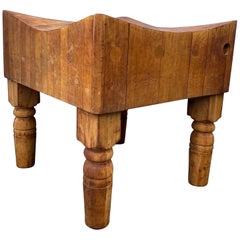Butcher Blocks
19th Century French Other Antique Butcher Blocks
Steel
Early 20th Century Industrial Butcher Blocks
Steel, Iron
21st Century and Contemporary American Minimalist Butcher Blocks
Maple
19th Century French Other Antique Butcher Blocks
Steel
20th Century French French Provincial Butcher Blocks
Wood
1950s American Industrial Vintage Butcher Blocks
Maple
Early 20th Century American Rustic Butcher Blocks
Maple
Mid-20th Century American Folk Art Butcher Blocks
Epoxy Resin, Maple
2010s American Organic Modern Butcher Blocks
Walnut
19th Century English Other Antique Butcher Blocks
Brass
Early 1900s French Antique Butcher Blocks
Metal, Steel
1920s French Vintage Butcher Blocks
Metal, Iron
Early 20th Century American Industrial Butcher Blocks
Wood, Maple
21st Century and Contemporary American Minimalist Butcher Blocks
Maple
21st Century and Contemporary American Minimalist Butcher Blocks
Maple
1920s French Art Deco Vintage Butcher Blocks
Beech
2010s American Organic Modern Butcher Blocks
Walnut
2010s Portuguese French Provincial Butcher Blocks
Beech
Late 19th Century French Country Antique Butcher Blocks
Iron
Mid-19th Century French Antique Butcher Blocks
Wood
21st Century and Contemporary American Butcher Blocks
Walnut
1920s French Vintage Butcher Blocks
Maple
1950s Vintage Butcher Blocks
Metal
19th Century French Rustic Antique Butcher Blocks
Beech
20th Century French French Provincial Butcher Blocks
Aluminum
19th Century French Antique Butcher Blocks
Beech
20th Century French French Provincial Butcher Blocks
Metal
Early 20th Century English Butcher Blocks
Metal, Steel, Iron
2010s Italian Butcher Blocks
Marble
19th Century French Antique Butcher Blocks
Beech
19th Century French French Provincial Antique Butcher Blocks
Wood
1930s European Art Deco Vintage Butcher Blocks
Beech, Pine
19th Century Swiss Antique Butcher Blocks
Iron
Late 19th Century French Country Antique Butcher Blocks
Iron
19th Century French Other Antique Butcher Blocks
Beech
Mid-20th Century Danish Scandinavian Modern Butcher Blocks
Teak
Mid-20th Century French Country Butcher Blocks
Marble, Iron
19th Century English Rustic Antique Butcher Blocks
Metal
19th Century French Rustic Antique Butcher Blocks
Beech
20th Century French Rustic Butcher Blocks
Wood
2010s American Industrial Butcher Blocks
Bronze, Stainless Steel, Iron
Mid-20th Century Danish Mid-Century Modern Butcher Blocks
Teak
1960s Mexican Mid-Century Modern Vintage Butcher Blocks
Hardwood
2010s American Industrial Butcher Blocks
Stainless Steel, Bronze
Early 20th Century French Art Deco Butcher Blocks
Steel
19th Century French Other Antique Butcher Blocks
Beech
1920s American Industrial Vintage Butcher Blocks
Metal, Steel, Iron
21st Century and Contemporary American Butcher Blocks
Ash
19th Century French Other Antique Butcher Blocks
Beech
1920s French Vintage Butcher Blocks
Steel
19th Century French Other Antique Butcher Blocks
Beech
20th Century American Mid-Century Modern Butcher Blocks
Walnut
20th Century French French Provincial Butcher Blocks
Wood
2010s American Industrial Butcher Blocks
Bronze, Steel, Iron
20th Century French Rustic Butcher Blocks
Wood
Mid-20th Century Danish Scandinavian Modern Butcher Blocks
Stainless Steel
2010s American Mid-Century Modern Butcher Blocks
Brass, Bronze, Steel
19th Century French French Provincial Antique Butcher Blocks
Beech
20th Century English Primitive Butcher Blocks
Wood
19th Century English Antique Butcher Blocks
Wood
Antique and Vintage Butcher Blocks
For the culinary star in your home, an antique or vintage butcher block is an indispensable accessory. Whether it’s a stand-alone table or island, a feature atop your rolling kitchen cart or a countertop application, this is a specific type of assembled wood surface for important food prep needs.
A butcher block is a designated work surface in a kitchen. Specifically, a butcher block affords you a strong and sturdy surface on which you can butcher meat as well as slice and dice vegetables. Having a designated area for this kind of work will help keep the kitchen sanitary and prevent potential damage to countertops.
Because wood is difficult to clean, stains easily and is an ideal surface for bacteria to flourish, counters were traditionally capped with metal. Butcher block — which, as a descriptor, refers to a specific material that is biodegradable and eco-friendly — was initially used in a commercial capacity but began to materialize in the early 20th century as countertops.
Butcher block is made from straight slats of wood that are glued together into thick slabs. The varieties include cherry, walnut, maple and oak. (The latter should be varnished or lacquered.) Construction types vary for butcher block countertops: There is edge grain (parallel boards that show their “edges”), end grain (small square pieces aligned vertically so that the “ends” are visible) and blended (with no specific pattern).
And there is a difference between a butcher block and a cutting board: A board in your kitchen that is used every day for slicing fruits and vegetables is generally called a cutting board. A more robust board — specifically, those that are constructed in the manner mentioned here — is a butcher block, which will be more appropriate for chopping meat as well as deboning.
The extensive collection of butcher blocks on 1stDibs includes French Provincial butcher blocks, rustic butcher blocks and more.
